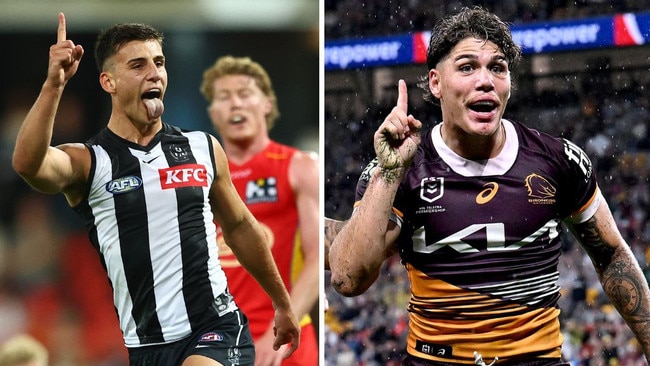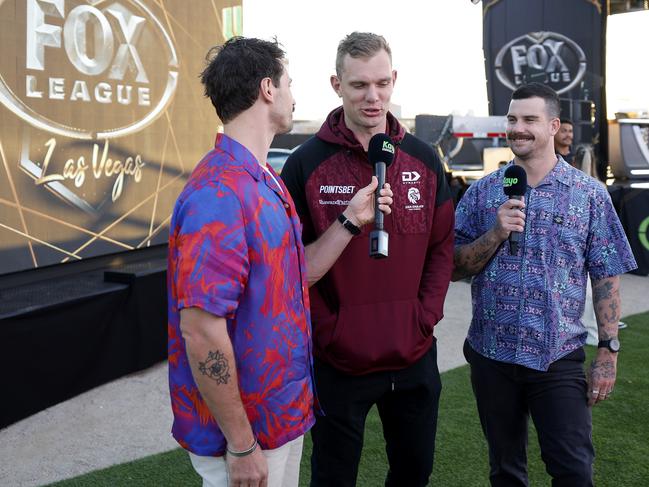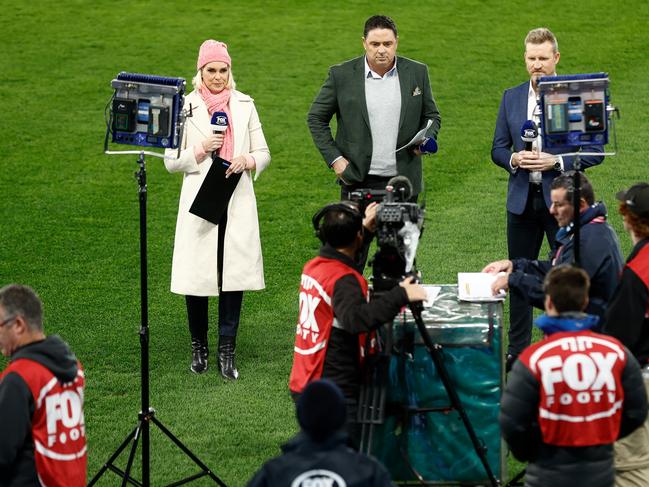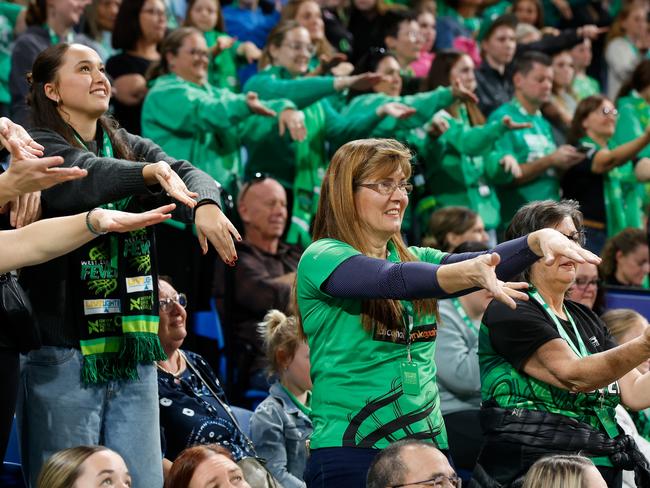How the NRL, AFL and other sports are placed for future broadcast rights deals given changing landscape
As concerns that the global sports rights bubble may burst, SHANNON GILL takes the crystal ball to Australian sport’s next round of rights negotiations with rights authority Colin Smith. Only one sport looks able to defy the fears.

Other Sports
Don't miss out on the headlines from Other Sports. Followed categories will be added to My News.
Fewer Australian sports can expect similar television paydays, and perhaps only one can lift its income substantially next time it goes to the negotiating table.
That’s the view of Australian sports media rights expert Colin Smith, as global sports rights enter a crossroads period.
Streamers entering the market have helped fuel the imminent NBA deal that has more than doubled to US$76 billion over 11 years. On the other side of the coin France’s Ligue 1 football is without a buyer and broadcaster months out from their season kick-off after no broadcaster (including incumbent Amazon) has shown interest in the price tag.
So where does that leave us here in Australia?
Smith got his crystal ball out for CODE Sports to predict the future economics of our favourite sports.
The must-haves
Peter Garrett and Midnight Oil once screamed “The rich get richer, the poor get the picture’. In Australian sport, the rich will likely stay rich, and it’s questionable who will want to show the poorer sports’ pictures.
“What will stay important in the Australian market is first tier media rights - what I call must -haves,” Smith tells CODE Sports.
“The must-haves are the AFL, the NRL, the Australian Open , Test cricket and you could mount an argument for some of the BBL as well.
“That’s it. Any of the other sports are peripheral.”
The position of those sports is strengthened by Foxtel/Kayo’s bedrock of subscribers being AFL and NRL fans, and free to air to television’s need for big ticket live sport to remain relevant.
“Free-to-air is only viewed now for news, reality television and sport,” Smith says.
The wildcard is whether the Matildas parlay the extraordinary viewing numbers when hosting the 2023 World Cup into similar annual figures across other tournaments and qualifying play.
Buoyed by the Matildas, the top 16 most watched programs on Australian free to air television, and 27 of the top 40, in 2023 were sport.

NRL’s expansion opportunity
On a global scale Smith sees the NFL, NBA and the IPL as the only sports leagues achieving continued rights growth.
Of the top tier sports in Australia, he only sees one as having the bargaining chips to get a significant lift in rights at the next negotiation.
“The only one that you could be bullish about is the NRL rights coming in 2027,” Smith says.
The current NRL deal ends after 2027 and pays a reported $400 million per season.
Smith says the introduction of the Dolphins in 2023, and the resultant doubling of live games for a Brisbane team, along with further expansion plans will be the driver.
“It’s possible, but they’ve got to be very careful where they think about putting the next licence. It’s not necessarily Perth or Papua New Guinea.”
“PNG is a one-sport country and the NRL is hugely popular, but the logistics of getting there versus the value you actually derive from it…you won’t be able to get any broadcast rights money out of the PNG.”
Smith believes the establishment of a Perth team has the potential to raise NRL rights revenue, yet it would be another team in New Zealand that represents the most bang for buck for Peter V’landys.
“I can see opportunities for rights to be purchased on both sides of the ditch going forward, so there is an argument that it should be New Zealand as opposed to being Perth. It’s a 50% bigger market than WA.”

Will the AFL plateau?
Gillon McLachlan’s parting gift to the AFL of renegotiating a rights extension ahead of time puts the AFL in a slightly different position. Its next rights period kicks in next season and runs through to 2031 paying $643million per year.
It occurred at the right time.
As football media doyen Eddie McGuire said on the Sounding Board podcast this week, if the deal was being done today “the money wouldn’t be there.”
Similarly Smith thinks increasing again will be a much tougher sell compared to the NRL, as he can’t see a major gain from its expansion plans.
“I don’t think the addition of Tasmania will shift the dial,” Smith says.
“I understand the compelling logic to why they’ve done it but I don’t think it will increase the value of their rights because of the size of Tasmania. Amount of content would be their best hope for an increase, so that’s more games.”
The most likely location for a 20th team , Northern Territory, is a similar equation.
“It’s in the hands of the AFL how they can drive it, but they’ve got a lot of work to do to make it more attractive to get more people to watch before 2031 if they want to continue the trajectory they’ve set.”

The best of the rest
Of the sports below that top tier Smith thinks life will get very tough to attract the rights fees they secured last time around.
“I don’t see significant increases for Rugby or the A -Leagues at all,” he says.
“Unless they can change the paradigm, it will be very challenging.
“I’ve been doing work on rugby for the last 20 years and it’s continued to go backwards each time, but there’s real latent support there.
“They’ve got to get their act together and fold in with their local communities who are rugby fans.”
The ‘next tier’ leagues he sees as bucking that trend are the NBL and Super Netball.

Granted, Smith sits on the NBL board, but on simple economics he sees the league, now with a financial stake in the WNBL, as the most likely to grow its rights value in the current climate.
“Their attendance numbers are bigger than some of these other sports, the NBL is where a growth engine could be. Super Netball is similar, but they’ve got to drive it, which hasn’t been the case in the past.”
Smith says the key for those sports is to focus on fan engagement to convert those encouraging crowd figures into being regular television viewers of games across the league.
“Broadcasters are not going to pay money for rights anymore where it doesn’t deliver them an audience.”
More Coverage
Originally published as How the NRL, AFL and other sports are placed for future broadcast rights deals given changing landscape





